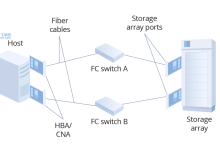从 antd 到 mysql:构建 Web 应用的利器
在 Web 应用开发中,前端框架和后端数据库是不可或缺的两个环节。而现在,随着技术的不断进步和丰富,开发者们已经不再局限于一些基础工具了。在这篇文章中,我们将探讨如何使用 antd 和 mysql 来构建 Web 应用。
Ant Design(简称 antd)是一款基于 React 的用户界面组件库,由 Ant Financial 研发团队推出。它提供了大量的组件和实用工具,让开发人员可以更快速地构建高质量的 Web 应用。而在后端数据存储方面,MySQL 是一个非常流行的关系型数据库,广泛应用于 Web 应用的开发中。
在本文中,我们将使用 React、antd 和 MySQL 三者相结合的方式来实现一个简单的 TodoApp。当然,前提是你已经掌握了基础的 Node.js、React 和 MySQL 开发知识。
让我们来看一下如何使用 antd 来构建前端页面。Antd 提供了许多常用的组件,如表单、日期选择器、下拉框等,这些组件都被封装成了一个个 React.js 组件,可以很方便地在项目中使用。下面是一个简单的 TodoList 组件的代码示例:
“`javascript
import React, { useState } from ‘react’;
import { List, Input, Button } from ‘antd’;
const TodoList = () => {
const [todos, setTodos] = useState([]);
const [inputValue, setInputValue] = useState(”);
const handleAdd = () => {
setTodos([…todos, { content: inputValue, done: false }]);
setInputValue(”);
};
return (
value={inputValue}
onChange={(e) => setInputValue(e.target.value)}
onPressEnter={handleAdd}
/>
Add
dataSource={todos}
renderItem={(todo) => (
{todo.content}
)}
/>
);
};
export default TodoList;
在上面的代码片段中,我们使用了 useState 来存储和渲染数据,使用了 Input 和 Button 组件来实现一个输入框和添加按钮,使用了 List 组件来展示 Todo 列表。其中,`onChange` 事件用于实现输入框的数据绑定,`onPressEnter` 事件用于实现输入框的快捷添加操作。
接下来,让我们来看一下如何使用 MySQL 来存储数据。我们可以使用 Node.js 的 mysql 模块来实现连接和操作 MySQL 数据库。下面是一个简单的 MySQL 建表和插入数据的代码示例:
```javascript
// 引入 mysql 模块
const mysql = require('mysql');
// 创建连接池
const pool = mysql.createPool({
host: 'localhost',
user: 'root',
password: 'root',
database: 'test',
});
// 创建表
pool.query(
`CREATE TABLE IF NOT EXISTS todos (
id INT(11) NOT NULL AUTO_INCREMENT,
content VARCHAR(255) NOT NULL,
done TINYINT(1) NOT NULL DEFAULT 0,
PRIMARY KEY (id)
)`,
(error, results, fields) => {
if (error) throw error;
console.log('Table created successfully');
}
);
// 插入数据
pool.query(
`INSERT INTO todos (content, done) VALUES (?, ?)`,
['Learn Node.js', 0],
(error, results, fields) => {
if (error) throw error;
console.log('Data inserted successfully');
}
);
在上面的代码片段中,我们首先使用 `mysql.createPool()` 创建了一个连接池,然后使用 `pool.query()` 方法来执行 MySQL 语句。在执行查询语句时,我们需要传入 SQL 语句和数据,用 `?` 来代替数据,最后在回调函数中处理查询结果。
让我们来看一下如何将前端和后端连接起来,实现一个完整的 TodoApp 应用。我们可以使用 Express.js 来搭建基于 Node.js 的后端服务,接收前端的请求和响应数据,然后再将数据进行存储。
下面是一个简单的 Express.js 代码片段:
“`javascript
const express = require(‘express’);
const mysql = require(‘mysql’);
const cors = require(‘cors’);
const bodyParser = require(‘body-parser’);
const app = express();
// 使用中间件来处理跨域请求和解析请求体
app.use(cors());
app.use(bodyParser.json());
// 创建连接池
const pool = mysql.createPool({
host: ‘localhost’,
user: ‘root’,
password: ‘root’,
database: ‘test’,
});
// 定义路由
app.get(‘/todos’, (req, res) => {
// 查询数据库中的所有数据
pool.query(`SELECT * FROM todos`, (error, results, fields) => {
if (error) throw error;
res.json(results);
});
});
app.post(‘/todos’, (req, res) => {
const { content, done } = req.body;
// 插入数据
pool.query(
`INSERT INTO todos (content, done) VALUES (?, ?)`,
[content, done],
(error, results, fields) => {
if (error) throw error;
res.json({ id: results.insertId });
}
);
});
// 启动服务器
app.listen(3000, () => console.log(‘Server started on port 3000’));
在上面的代码片段中,我们使用了 Express.js 框架来创建一个基于 Node.js 的后端服务。我们定义了两个路由 `/todos` 和 `/todos`,在收到 GET 请求时,我们会查询数据库中的所有数据并返回给前端;在收到 POST 请求时,我们会将接收到的数据存入数据库并返回一个新的数据 ID。
我们将前端页面和后端服务相互联系起来,在前端页面中添加 Ajax 请求,从而实现完整的 TodoApp 应用。完整的代码示例请见:https://github.com/zliang77/antd-mysql-todoapp。
以上就是本文的全部内容,希望通过本文的介绍,你能更好地理解如何使用 antd 和 MySQL 来构建 Web 应用。当然,这只是 Web 应用开发的冰山一角,我们还需不断学习和探索更多的技术和工具。

 国外主机测评 - 国外VPS,国外服务器,国外云服务器,测评及优惠码
国外主机测评 - 国外VPS,国外服务器,国外云服务器,测评及优惠码














